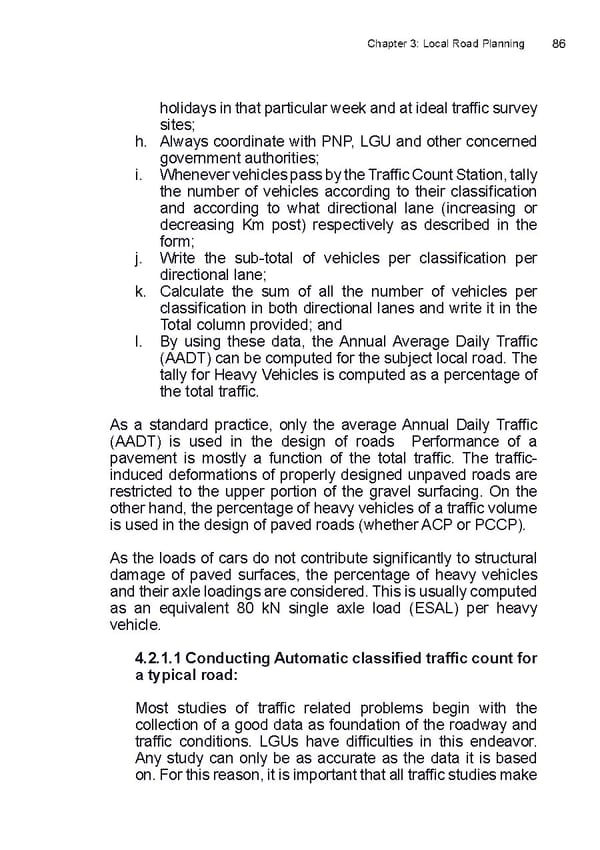Chapter 3: Local Road Planning 86 holidays in that particular week and at ideal traiffc survey sites; h. Always coordinate with PNP, LGU and other concerned government authorities; i. Whenever vehicles pass by the Traiffc Count Station, tally the number of vehicles according to their classiifcation and according to what directional lane (increasing or decreasing Km post) respectively as described in the form; j. Write the sub-total of vehicles per classiifcation per directional lane; k. Calculate the sum of all the number of vehicles per classiifcation in both directional lanes and write it in the Total column provided; and l. By using these data, the Annual Average Daily Traiffc (AADT) can be computed for the subject local road. The tally for Heavy Vehicles is computed as a percentage of the total traiffc. As a standard practice, only the average Annual Daily Traiffc (AADT) is used in the design of roads Performance of a pavement is mostly a function of the total traiffc. The traiffc- induced deformations of properly designed unpaved roads are restricted to the upper portion of the gravel surfacing. On the other hand, the percentage of heavy vehicles of a traiffc volume is used in the design of paved roads (whether ACP or PCCP). As the loads of cars do not contribute signiifcantly to structural damage of paved surfaces, the percentage of heavy vehicles and their axle loadings are considered. This is usually computed as an equivalent 80 kN single axle load (ESAL) per heavy vehicle. 4.2.1.1 Conducting Automatic classiifed traiffc count for a typical road: Most studies of traiffc related problems begin with the collection of a good data as foundation of the roadway and traiffc conditions. LGUs have diiffculties in this endeavor. Any study can only be as accurate as the data it is based on. For this reason, it is important that all traiffc studies make
 LRM Manual CMGP Page 85 Page 87
LRM Manual CMGP Page 85 Page 87